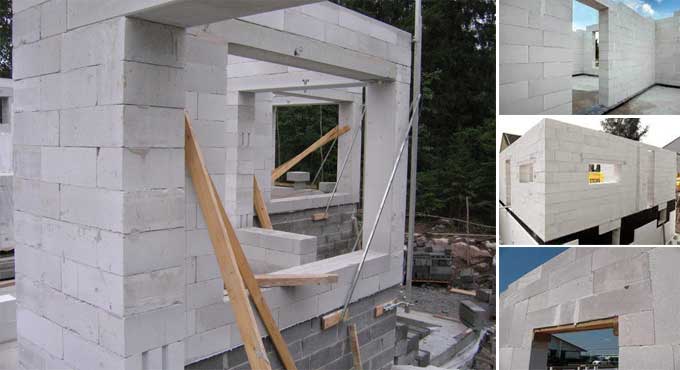
Everything you need to know about the Autoclaved Aerated Concrete Block
ACC, or autoclaved aerated concrete, is a combination of fine aggregate, cement, and an expansion agent such as gypsum and lime aluminum powder that rises like bread dough.
In reality, in the plant where it is molded and cut into a perfectly dimensional unit, this form of concrete includes 80% of air. ACC is a precast lightweight construction material that is ideal for concrete masonry. In an autoclave, ACC goods are cured by heat and pressure.
ACC, which was invented in the 1920s, provides building insulation as well as fire and mold protection.
ACC materials may be used for interior and exterior construction, and they can be painted or coated with a stucco or plaster mix to protect them from the weather, or they can be covered with siding material.
On-site, ACC material can be routed, sanded, or cut to size using normal power tools and a carbon steel cutter.
Composition
ACC block was made with the following materials:
Cement material
In the construction industry, cement serves as a binding agent in ACC block building; the type of concrete admixtures used in the creation of these ACC blocks depends on how strong the blocks need to be.
Fly ash material
Concrete costs can be reduced by using fly ash as an industrial product. A thermal insulator, fire resistor, and sound absorber provide a number of benefits.
Sand material
Fine aggregate is essentially crushed stone sand with maximum particles passing through a 4.75mm filter. Containment must not be less than 80%.
Aluminum powder material
Aluminum acts as an expansion agent. An air bubble is produced when calcium hydroxide aluminum and water react with the raw material, releasing hydrogen gas when the raw material reacts with aluminum powder.
Limestone material
Calcite aragonite is the main component of limestone. Limestone is obtained at the ACC facility by crushing it to a fine powder.
Properties
Here are a few properties of ACC blocks:
- Higher stability in the ACC blocks in a building's construction.
- In terms of strength, ACC blocks are much stronger and more reliable.
- Increased structural stability of a building and the Interior is clean and long-lasting.
- Acc blocks weigh about 80% less than traditional red bricks, resulting in a significant decrease in dead weight.
- ACC blocks have a beautiful look and are widely adaptable to any type of design.
Benefits
Here are a few benefits of ACC blocks:
- ACC blocks are ideal for situations where fire protection is required.
- Porous ACC reduces sound absorption.
- The greater the stability of ACC blocks.
- ACC blocks were simple to handle and manipulate, and they could be cut and drilled using common tools.
- Highly outstanding in providing good strength.
- ACC blocks can or have been designed to spin easily.
- It keeps the interior temperature warm in the winter and cool in the summer, resulting in reduced air conditioning demand and energy efficiency.
- The exterior surface of ACC walls provides resistance to water penetrability.
- ACC blocks can or have been designed to spin easily.
Manufacturing Process
Here are a few manufacturing processes of ACC blocks:
Mixing the ingredients
Dosing and mixing follow the processing of raw materials. The mixing and pouring cycle take 5.5 minutes. To create the proper combination of ACC blocks, dosing and mixing are needed. Containers are filled with fly ash. Pumping is halted after the required weight is poured in.
Each component is combined in a drum. Dosing units are discharged into a mold in the quantity specified.
Curing
When the raw material mixture is complete, it is put into a mold. The mold size is 4.2*1.2*0.65 and is covered with a thin coating of oil to ensure that the cake looks like a green cake. Aluminum interacts with calcium hydroxide and water and produces hydrogen gas.
This causes the steamy mix to expand because of the production of teng cells. Rising is affected by the raw material composition and climatic conditions.
Cutting
The green cake is ready for cutting when it reaches cutting strength. Depending on your needs, you can demolish and slice it.
Remolding is carried out by lifting the mold by crane from the pre-curing chamber. Various technologies require different types of molds, which reveal the molding and cutting processes involved.
To get more details, watch the following video tutorial.
Video Source: Aircrete Europe


